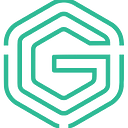Non-fungible tokens first became remarkable in 2017. Still, their popularity started rising only in 2021 due to some outstanding NFT sales. What are non-fungible tokens? Will they crowd the market soon?
NFT: Meaning
In 2017, the CryptoKittens game introduced tokens that confirmed the player’s ownership of virtual kittens. However, it didn’t lead to NFT’s worldwide popularity. The situation changed in 2021. In February, Chris Torres sold a non-fungible token of the Nyan Cat meme for $590,000. In March, Mike Winkelmann (also known as Beeple) sold his NFT collage of 5,000 digital pieces for $69.3 million. The list can be continued.
A non-fungible token is a digital security representing ownership of a unique item (tangible or intangible), for instance, art, music, videos, GIFs. NFTs are bought and sold online.
Why aren’t tokens fungible? Crypto or fiat currencies are fungible so that they can be freely exchanged for each other. They are equal in value; for example, one euro is one euro, not five. But one NFT presented by Banksy’s painting isn’t equal to one for the Nyan Cat meme.
How the NFT Market Works
NFTs are usually created on the Ethereum blockchain, with a usage of an ERC-721 standard. There are cases when a company makes a special platform.
Tokens have unique data that allows for ownership verification and the transfer of tokens between owners. Also, it’s possible to store certain information, such as the artist’s signature, in the token’s metadata.
Non-fungible tokens can be created by anyone who owns the intellectual property rights to a product. There are special services to launch, price, and put tokens for auction. A buyer owns the token, which is recorded in the blockchain.
The most common way to create and sell a token is through a decentralized marketplace such as Rarible or OpenSea. An NFT holder can resell it. Still, such deals are rare, as NFT regulation doesn’t exist yet.
Future of NFT
Currently, it’s challenging to define whether non-fungible tokens will crowd the market or if regulations will restrict their circulation.
Benefits
Non-fungible tokens may create an effective system of digital objects’ ownership. Blockchain is used to create and validate digital items. Thus, these items gain value and investment attractiveness.
Also, the number of DeFi projects with NFTs is increasing. For instance, the DeFi protocol yearn.finance offers a tokenized insurance service. NFTs act as an insurance policy that is transferred or sold to another user.
Worth Thinking About
The NFT market isn’t structured yet. The deals occur on the secondary market as auctions, which lengthen the process of purchase or sale.
The market can be easily inflated, as it’s impossible to define a fair price. We mentioned some examples of the NFTs, but the market is illiquid, and the token exchange isn’t verified.
Wash trading, where sellers raise a token’s trading activity by buying and selling an asset from themself, is another scourge of the NFT market.
Takeaway
As the NFT market isn’t structured yet, it’s hard to predict its future. Although it can become a bubble, there are odds of a wider implementation of NFTs.
